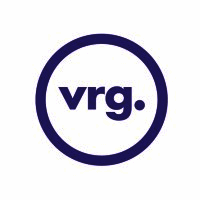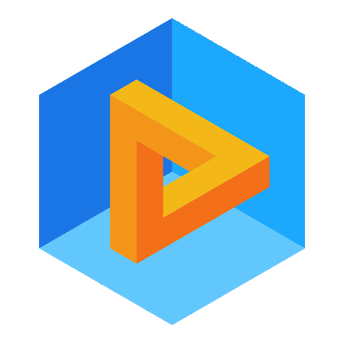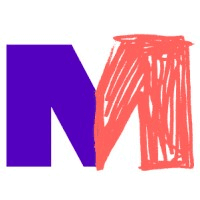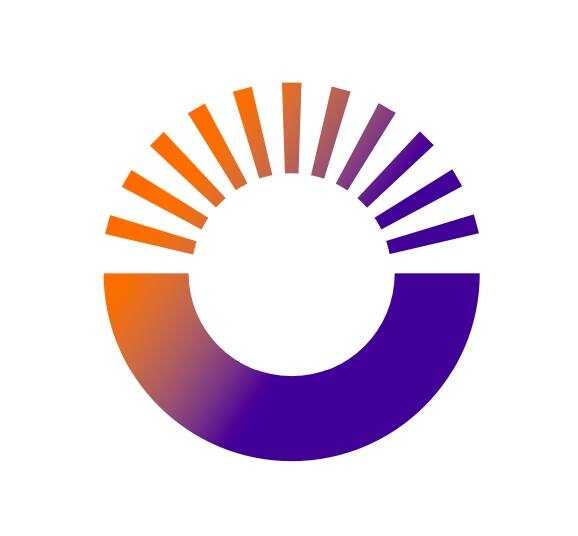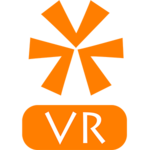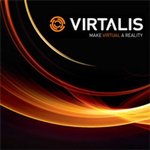Yes, VR software has improved to the point where it is interoperable with multiple devices and platforms, providing users with a seamless experience. VR software can be accessed via cloud-based solutions on a variety of devices, including smartphones, tablets, desktop computers, and even VR headsets. This not only broadens the scope of VR technology, but also increases user flexibility and accessibility.
List of 20 Best VR Software
TechViz XL, the robust VR solution designed to elevate your engineering and design workflows. With seamless compatibility with over 200 applications, it enables real-time visualization and modification of 3D models without any need for data conversio...Read More TechViz XL
Squint the mobile application that utilizes artificial intelligence and augmented reality to simplify data input. With Squint, your company can bid farewell to tedious manual tasks and welcome automated procedures, customized workflows, and improved...Read More Squint
XTAL is the revolutionary Virtual Reality headset designed in collaboration with expert civil and military pilots. Developed with valuable input from Naval Air Station Patuxent River pilots, this cutting-edge headset sets the standard for pilot train...Read More XTAL
VRcollab LITE is a collaboration and coordination tool for seamless project management. Easily integrate BIM models from different softwares and conduct virtual meetings with stakeholders, regardless of their location. With our immersive platform, yo...Read More VRcollab LITE
Mursion is a one-of-a-kind platform that offers immersive learning solutions. By combining human-powered AI technology and virtual avatars, Mursion creates safe and realistic environments for individuals to develop necessary skills across different i...Read More Mursion
HQSoftware is a leading provider of IoT and AR/VR solutions. From our headquarters, our team delivers a wide range of software development and web application services tailored to the specific requirements of our clients. Our commitment to excellence...Read More HQSoftware
VRED by Autodesk is visualization software designed for automotive and product design. With its advanced capabilities, designers can easily create realistic renders and virtual models to aid in decision-making. Its real-time collaboration features an...Read More VRED
WorldViz is the VR solution for immersive experiences. Our cutting-edge technology and expert team provide personalized VR systems and software tailored to your needs, empowering businesses to excel in areas such as healthcare, education, and researc...Read More WorldViz
LarkXR is a XR cloud streaming solution for businesses and developers. Immerse yourself in a world of interactive and immersive streaming with this cutting-edge software. With a focus on excellence and enterprise-grade capabilities, LarkXR empowers b...Read More LarkXR
VR-STAR: a software that integrates VR/AR and AI technology to achieve Digital Operation Excellence. Through seamless integration of real and virtual worlds and enhanced human-machine interactions, VR-STAR boosts productivity and efficiency in variou...Read More VR-STAR
IC.IDO is a virtual reality solution leading the way in transforming the collaboration process for design and engineering teams. With its state-of-the-art technology, IC.IDO maximizes accuracy and productivity, empowering teams to make real-time deci...Read More IC.IDO
TrainBeyond is the premier virtual reality training solution for businesses. Our cutting-edge platform uses immersive and game-based technology to equip your workforce with the necessary skills for handling emergency situations. Through realistic sim...Read More TrainBeyond
High Fidelity - the pioneering spatial audio solution that takes digital communication to the next level with its cutting-edge features. Experience unparalleled voice clarity, reduced background noise, and immersive 3D sound effects, enhancing the ov...Read More High Fidelity
Visual Render is a software designed to transform complex data into engaging and dynamic visualizations. Its robust features enable enhanced understanding and aid in making informed decisions in diverse fields, ranging from engineering to education...Read More Visual Render
Unreal Engine is a versatile game design platform designed for 3D artists, game developers, filmmakers, VFX specialists, and animation professionals. With its robust tools, it empowers users to effortlessly create captivating 3D or 2D games. This cut...Read More Unreal Engine
EON Reality offers cutting-edge AI-powered XR solutions to revolutionize knowledge transfer. Our advanced AR and VR technologies are reshaping the landscape of education and industry, delivering immersive learning experiences and top-notch human-comp...Read More EON Reality
the powerful IrisVR Suite is a augmented reality software known for its impressive visuals and intuitive design. This all-in-one suite includes a range of tools like virtual meeting capabilities, 3D object development, and collaboration features to e...Read More IrisVR Suite
LiveTour is a Virtual Tour creator that is tailored to meet the specific needs of your business. Choose from a diverse selection of templates and effects to create a fully personalized tour that highlights your brand and services. Our software is com...Read More LiveTour
Contentstack is a headless CMS that streamlines content creation, organization, and distribution for your team. With its intuitive interface and API-first approach, Contentstack empowers seamless workflows for swift publishing across multiple platfor...Read More Contentstack
3ds Max is a 3D modelling, rendering, and animation software for professionals. Craft breathtaking designs and lifelike environments using its extensive tools and user-friendly interface. Enhance your creations with intricate textures and shading, ta...Read More 3ds Max
Learn More About VR Software
- What Is VR Software?
- What Are The Recent Trends In VR Software?
- Benefits Of Using VR Software
- Important Factors To Consider While Purchasing VR Software?
- What Are The Key Features To Look For In VR Software?
- Why Do Businesses Need VR Software?
- How Much Time Is Required To Implement VR Software?
- What Is The Level Of Customization Available In VR Software?
- Which Industries Can Benefit The Most From VR Software?
- Conclusion
What Is VR Software?
VR software, or virtual reality software, is a computer program that allows users to experience and interact with a simulated environment. It is a necessary component for creating and delivering virtual reality content, hence it is a fundamental aspect of any VR system or device. One of the key functions of VR software is to create a 3D environment that the user may explore using a VR headset.
This is accomplished through a process known as rendering, in which the software generates a virtual world with realistic images, textures, and effects. In addition to providing images, VR software includes a variety of interactive aspects such as 6DOF (six degrees of freedom) tracking, haptic feedback, and motion controllers. These characteristics enable users to engage with the virtual environment in a natural and immersive manner, hence improving the overall experience.
There are several types of VR software on the market, each with its own unique purpose and capabilities. Some are intended for amusement purposes, such as gaming and virtual tours, while others are more suited to training and simulation applications in areas such as healthcare, education, and military. When selecting VR software, you should evaluate compatibility with your VR hardware, ease of use, and the features and functionalities it provides.
Some software requires additional plugins or tools, so make sure it matches your specific needs and expectations. Overall, VR software is an essential component of the VR ecosystem, offering the tools required to create immersive and realistic virtual experiences. Whether you are a gamer, content creator, or a corporation trying to incorporate VR technology into your operations, selecting the proper software can significantly improve your entire VR experience.
What Are The Recent Trends In VR Software?
Virtual reality (VR) technology has advanced significantly in recent years, and this progress has been matched by a continuously changing ecosystem of VR applications.
To make an informed purchasing decision, buyers must be aware of the most recent trends in VR software.
1. Increased Emphasis On User Experience: One of the most recent trends in VR software is a strong emphasis on delivering a seamless and immersive user experience. VR developers are continually working to improve the entire user experience by improving graphics, minimizing motion sickness, and introducing more natural user interactions.
2. Cross-Platform Compatibility: With the release of several VR devices such as the Oculus Rift, HTC Vive, and PlayStation VR, there has been an increased need for VR software that is cross-platform compatible. This trend is likely to continue as more competitors enter the VR industry, making cross-platform compatibility an important element for purchasers to consider.
3. Integration With Artificial Intelligence (AI): AI has made its way into a variety of businesses, including VR. Recently, there has been an increase in the integration of AI into VR software to improve the realism and interactivity of virtual environments. This tendency is predicted to continue as AI technology advances and has the potential to change the VR experience.
4. Collaborative VR: Another new development in VR software is the emphasis on collaboration capabilities, which enable numerous users to be immersed in the same virtual environment. This has enormous potential in fields like education, training, and team-based work, where real-time cooperation in a virtual environment can improve learning and productivity.
5. Mobile VR: The proliferation of mobile VR headsets, such as Google Cardboard and Samsung Gear VR, has provided new opportunities for VR software developers. With the growing popularity of mobile VR, we should expect more VR apps designed exclusively for this platform in the near future.
6. Cloud-Based VR Cloud-Based: VR is another trend gaining traction in the VR software industry. This enables VR experiences and applications to be hosted in the cloud, removing the need for sophisticated hardware and making VR more accessible and affordable to users.
Benefits Of Using VR Software
Virtual reality (VR) software has transformed how we see and interact with technology. It uses cutting-edge technology to create an immersive, three-dimensional environment that allows users to completely interact with digital information. VR software has several applications, including gaming, education, training, and healthcare.
Explore the advantages of utilizing VR software, allowing you to make an informed selection.
1. Increased User Engagement: VR software raises the bar for user engagement by offering a realistic and engaging experience. It enables consumers to discover and engage with digital content in ways that were previously inconceivable. This increased level of immersion keeps users interested for longer periods, making it perfect for training and teaching.
2. Improved Learning And Training: VR software is being utilized in a variety of businesses to train and educate employees. It provides a safe and regulated environment in which trainees can practice and improve their abilities. Medical students, for example, can do surgery using VR software without risking the lives of real patients. This technology also improves memory retention and learning efficiency.
3. Cost-Effective: Historically, offering training or simulations required large investments in technology, facilities, and human resources. However, VR software dramatically cuts these expenses because it can replicate a variety of scenarios without requiring expensive equipment or locations. This makes it a perfect alternative for corporations and groups wishing to save money while still providing quality training or experiences.
4. Time-Saving: VR software allows users to experience a variety of scenarios in a shorter period of time. This is especially useful in fields like healthcare, where mastering specific abilities can take a longer time. VR software can speed up the learning process by delivering real-time feedback and correcting errors, thereby saving time and improving efficiency.
5. Accessibility: VR software has made virtual experiences available to a diverse variety of users, including those with physical disabilities. It permits persons with disabilities to participate in activities that would otherwise be impossible. People with mobility difficulties, for example, can now travel around the world via VR experiences.
6. Increased Productivity: Using VR software in training and education programs can dramatically boost productivity. Employees can quickly learn new skills and procedures, which saves time and costs on training. This results in a more efficient and knowledgeable staff, which boosts production and improves corporate operations.
Important Factors To Consider While Purchasing VR Software?
When considering acquiring virtual reality (VR) software, it is critical to weigh various elements in order to make an informed choice. In recent years, VR software has grown in popularity, and consumers now have more options.
Here are some key aspects to consider while choosing the finest software for your needs.
1. Compatibility: The primary factor to evaluate is compatibility. Your VR software should be compatible with the devices you intend to utilize it on. To avoid compatibility concerns, ensure that the program is compatible with the VR headset, game console, or PC in question.
2. Ease Of Use: VR applications can range from simple games to sophisticated simulations. As a result, it is critical to assess the software's ease of use, especially if you are not technically aware. Look for software with a user-friendly design and clear instructions for use.
3. Content And Features: The content and features of VR software are important factors in establishing its worth. Look for software that provides a wide range of content, including games, instructional materials, and simulations. Consider the features available, such as customisable avatars and multiplayer possibilities, to improve your VR experience.
4. Performance And Graphics: The performance and graphics of VR applications can have a significant impact on the whole experience. To avoid motion sickness and other discomforts, choose software with high-quality images and smooth performance.
5. Price: The cost of VR software varies depending on its features and capabilities. Before making a purchase, determine your budget and what attributes are most important to you. Keep in mind that the most expensive software may not necessarily be the greatest fit for your requirements.
6. Customer Support: VR software, like any other software, may experience technical problems or require troubleshooting. It is critical to buy software from a reputable firm that provides responsive customer service to address any issues that may emerge.
7. Reviews And Ratings: Before making a purchase, read the reviews and ratings of other people. This can provide insight into the software's quality and performance, allowing you to make a more informed selection.
What Are The Key Features To Look For In VR Software?
When it comes to choosing VR software, a few important elements should be at the top of your priority list.
These qualities will guarantee that you make the correct investment and select software that fulfills your requirements and expectations.
1. Compatibility: The first thing you should look for in VR software is compatibility. You want to ensure that the program is compatible with your VR headset and controller. This will ensure a smooth experience and avoid technological issues.
2. User Interface: The software's user interface should be intuitive and easy to use. This will make it easier to browse and engage with the virtual world. Look for software with a well-organized and user-friendly interface.
3. Content Variety: It is critical that the VR software has a diverse range of content. You want to use software that provides a variety of experiences, such as games, instructional information, and virtual tours. This will ensure that you make the most of your investment.
4. Customization Options: Another significant element to consider is the option to personalize your virtual environment. This could include changing the images, adding sound effects, or designing your own avatars. This allows you to tailor your experience and make it unique.
5. Tracking Precision: A seamless and realistic VR experience relies heavily on the tracking system's precision. Look for software that use modern tracking technology and has a high level of accuracy to avoid latency or motion sickness.
6. Multiplayer Support: If you intend to use the VR program for social or collaborative activities, be sure it supports multiplayer. This enables you to connect with others and share your virtual environment with them.
7. Updates And Support: Because the VR business is always growing, it is critical to select software that is frequently updated with new features and issue patches. In addition, ensure that the software provides trustworthy customer assistance in the event that you face any problems.
Why Do Businesses Need VR Software?
In today's digital world, businesses are continuously looking for new methods to better their operations and differentiate themselves from their competition. Virtual reality (VR) technology has emerged as a promising option, with limitless applications for enterprises of all sizes and industries. To fully realize the potential of VR, organizations require dependable and effective VR software.
There are various reasons why firms require VR software:
1. Improve Training And Learning: Businesses can use VR software to develop immersive and interactive staff training sessions. These simulations enable personnel to practice difficult activities and scenarios in a safe and controlled environment, reducing the likelihood of errors and mishaps. VR training also eliminates the need for costly physical setups and is readily replicated for firms with several locations.
2. Improve Product Development: VR software is quickly changing the product development process. Virtual prototypes allow firms to quickly test and enhance product designs before investing in pricey physical prototypes. This not only accelerates the development process, but also allows for more accurate feedback and revisions, resulting in better goods at lower prices.
3. Improve Marketing And Sales Effectiveness: VR technology is an effective marketing tool that may help firms present their products and services in a more engaging and memorable manner. Virtual reality software enables immersive product presentations and virtual tours, providing potential consumers with a realistic experience and assisting them in making more educated purchasing decisions. This can ultimately result in greater revenue and client happiness.
4. Improve Collaboration And Communication: Collaboration and communication are essential for a successful business. VR software enables remote collaboration by allowing team members from various locations to collaborate in a virtual environment. This not only saves time and money on travel, but also encourages collaboration and innovation.
5. Develop Unique Customer Experiences: Businesses can use VR software to create one-of-a-kind and tailored customer experiences. This could include virtual pop-up stores, product demonstrations, or immersive brand experiences. Such experiences not only entice customers, but also leave an indelible imprint, encouraging brand loyalty and advocacy.
How Much Time Is Required To Implement VR Software?
The installation time for VR software varies according to the program and the project's complexity. On average, successfully integrating a VR system into your business or organization might take anywhere from a few days to several months.
To obtain a more accurate estimate of the time required, consider the following factors:
1. Type Of VR Software: The VR software you choose will have a big impact on the implementation time. Basic 360-degree video software can be up and running in a few days, however more complicated VR applications may take weeks or even months to completely develop.
2. Customization Requirements: If you need a fully customized VR experience, the software implementation process may take longer. This is because the development team will need to create and code custom features and functionalities to fulfill your exact requirements.
3. Gear Requirements: VR software frequently necessitates specific gear, such as headsets, controllers, and tracking devices. If your company needs to purchase and install this equipment, the implementation time may be extended.
4. Implementation Team Skill Level: The team's expertise and skill level in installing the VR software can have an impact on the total timetable. If the staff is unfamiliar with VR technology, it may take longer to learn and correctly integrate the program.
5. Testing And Troubleshooting: As with any software implementation, testing and troubleshooting are required to ensure a seamless and error-free experience. This process may take some time, depending on the software's complexity and any potential complications that develop. It is critical to collaborate closely with the VR software provider to obtain a more accurate estimate of the deployment time based on your individual requirements. It is also recommended to have a well-defined plan and timeframe in place to ensure successful and timely execution. Furthermore, investing resources and having a committed team working on the project might assist speed up the process.
What Is The Level Of Customization Available In VR Software?
The level of customisation possible in VR software varies substantially according to the device and its intended purpose. However, most VR software allows for a great amount of customisation to fit the specific demands and tastes of each user. The ability to change visual settings is a key part of VR program customization. This enables the user to personalize the virtual reality experience based on their computer's capabilities and preferences.
Users can also adjust the resolution, field of view, and other graphic features to meet their requirements. Another area of customization in VR software is the ability to change control parameters. This contains the type of controllers used, button mapping, and sensitivity options. Users can customize the controls to make them more comfortable and easy to use.
Some VR software also includes customizable avatars, which allow users to build a virtual version of themselves or select from a list of pre-made possibilities. This personalizes the VR experience and can help the user immerse themselves further. Additionally, many VR software programs allow you to import or build unique 3D objects and environments.
This enables a high level of customisation when developing unique and specialized VR experiences for a variety of applications such as training, gaming, and education. It is crucial to remember that the level of customisation may vary depending on the software's price and intended usage. Higher-end VR software intended at professional use may provide more advanced customization possibilities than more economical ones designed for leisure use.
Which Industries Can Benefit The Most From VR Software?
Virtual reality (VR) software has evolved far beyond its origins as a game and entertainment tool. Today, VR technology is being used by a variety of businesses to improve operations, train employees, and deliver immersive customer experiences. So, which industries will profit the most from VR software?
Let's take a deeper look.
1. Manufacturing: The industrial business can tremendously benefit from virtual reality software. Manufacturers can use virtual reality to develop realistic simulations of their manufacturing processes, allowing them to discover possible risks and inefficiencies. This not only streamlines procedures, but also reduces the likelihood of accidents and errors. VR software can also be used to train personnel on new technology, which eliminates the need for expensive and time-consuming physical training sessions.
2. Healthcare: The healthcare business is continually evolving, with new and inventive approaches to improving patient care. Virtual reality software is used in a variety of healthcare settings, including surgical training, mental health therapy, and rehabilitation. VR software can train medical workers in a safe and controlled setting by mimicking medical processes and settings, lowering the risk of errors during real-world surgeries. It is also used to treat individuals with anxiety and phobias, providing a non-invasive and cost-effective alternative.
3. Education: VR software is transforming how students learn and interact with information. Immersive experiences enable pupils to better understand complex concepts and retain information for longer periods of time. This is especially useful for history and science classes, where students can virtually visit historical landmarks or explore the depths of the ocean. VR software is also being utilized to provide virtual field trips, which eliminate the need for expensive and time-consuming actual excursions.
4. Real Estate: Purchasing a home is an essential decision, and potential purchasers should have a thorough understanding of the property before completing a purchase. Real estate agents can use VR software to conduct virtual tours of properties, providing purchasers a realistic sense of the area and its characteristics without the need to physically visit the property. This not only saves time, but it also enhances the customer experience and raises the likelihood of a successful transaction.
5. Tourism And Hospitality: The tourism and hospitality industries are focused on providing customers with unique and memorable experiences. VR software improves this experience by allowing guests to virtually explore a destination or try out a hotel room before making a reservation. This not only helps with marketing but also improves consumer happiness. VR software can also be used to create immersive training programs for hotel employees, ensuring that they are well-prepared to give excellent service to customers.
Conclusion
To summarize, VR software is a rapidly growing market that offers limitless opportunities for both enterprises and people. Throughout this buyer's guide, we've looked at the key features and variables to consider when selecting the best VR software for your need. When making a decision, consider the compatibility with your existing hardware, the available content and development tools, and the quality of support and updates from the VR software vendor.
Additionally, the user experience, ease of use, and available customization choices can have a significant impact on the success of your VR initiatives. It is also critical to consider the cost and pricing plan of the VR software, whether it is a one-time buy or a subscription service. Taking into account your budget and long-term objectives might assist you in determining the best value for your investment.
Finally, the ideal VR software should coincide with business objectives and create a seamless and immersive experience for both producers and end users. By carefully evaluating all of the factors discussed in this book, you can make an informed decision about your VR software purchase. Embrace virtual reality's power and use the correct VR software to take your ideas to the next level.
VR Software FAQ's
Can VR Software Be Accessed Across Multiple Devices And Platforms?
Is VR Software Future-Proof And Adaptable To Emerging Technologies Like AI, Blockchain Or IoT?
Yes, VR software is always developing to accommodate the introduction of new technologies like AI, blockchain, and IoT. As these technologies improve, so will VR software, making it future-proof and highly versatile. In fact, many VR systems already use these technologies, enabling for more immersive experiences. VR software will grow alongside the changing technological world.
Is There A Free Trial Offered To Assess VR Software Before Committing?
Yes, many VR software businesses provide free trial periods for potential consumers to try their goods before making a full purchase. This allows customers to examine the software's features and functioning to see if it satisfies their requirements. Free trials normally last 14 to 30 days and may require users to register by email or create an account. It's an excellent opportunity to evaluate the VR software and make an informed decision about investing in it.
Does VR Software Offer Data Security Features And Meet Regulatory Compliance Standards?
Yes, most VR software suppliers include data security mechanisms to secure user information from cyber threats. They also follow the most recent regulatory standards, such as GDPR and HIPAA, to protect the privacy and security of sensitive information. Some VR software also includes data encryption, user authentication, and backup to improve data security. It is critical to select a credible VR software vendor who values data security and compliance.
Can VR Software Integrate Seamlessly With Existing Tools And Platforms?
Yes, VR software can work perfectly alongside existing tools and platforms. Many VR software suppliers support major software and platforms like Unity, Unreal Engine, and Steam VR. This enables better integration and collaboration with existing workflows. Furthermore, some VR software supports API integration, making it even more versatile and adaptable to other platforms.



